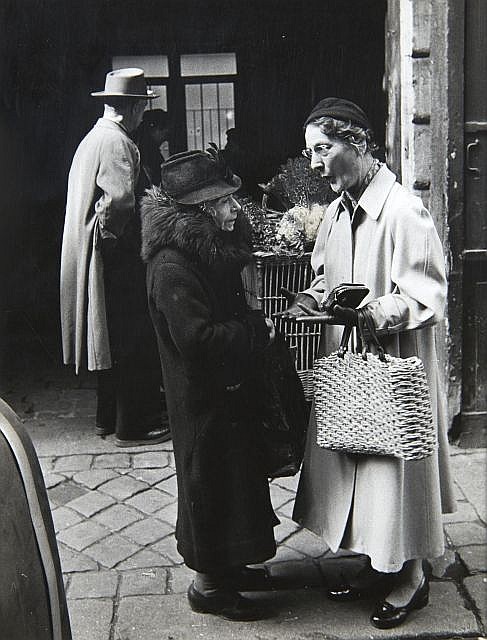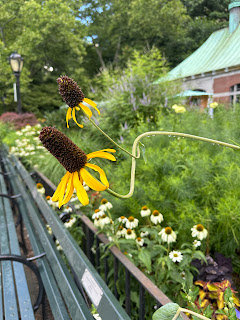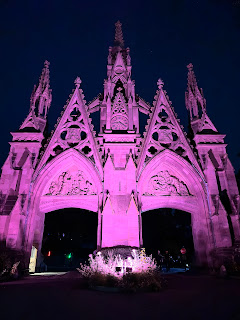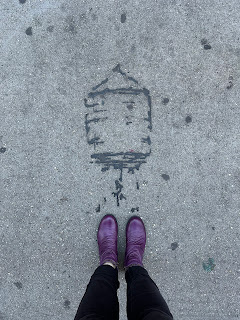Last Tuesday, I attended a lecture at the Jefferson Market Library put on by Village Preservation and the Remember the Triangle Fire Coalition. Dr. Daniel Levinson Wilk, Associate Professor of American History at FIT and board member of the Coalition, told the story of the factory, the fire, the survivors, and those who perished.
Dr. Wilk began by explaining the history of ready-made clothing. Prior to the late 1800’s, all clothing was handmade and tailored to a person’s specific size and measurements. The market for standard sized garments began with sailors and slaves, with a significant turning point during the Civil War, when uniforms were mass manufactured for soldiers. One of the first methods for the mass production of clothing in New York City was through a process called “outwork,” wherein a specific part of, say, a shirt, was brought, en masse, to the home of a seamstress in her tenement apartment. She may be responsible for stitching one single seam on one hundred of the same item, then the garments were picked up and brought to another apartment to be handled by another seamstress, and so on and so forth until the garments were complete. (A lot of running around.)
When the original factories were built, immigrant seamstresses had to carry their own sewing machines to and from the factories each day, until such time as more efficient processes were invented and installed. The floors of garment factories were crowded, messy, and safety standards as we know them today were non-existent; there was no OSHA. The Triangle Shirtwaist Factory occupied the top three floors (eight, nine, and ten) of the former Asch building, now called the Brown building. It is suspected that the fire started on the eighth floor from someone accidentally igniting a fabric scrap pile with a cigarette butt. As the fire spread, the workers on the eighth floor were able to escape through the elevator and the stairs, and the workers on the tenth floor were able to escape via the roof. The workers on the ninth floor, however, were trapped. The doors to the exits were locked, and after sheltering under their work benches and attempting to break down the doors, some made it out to the fire escape that then collapsed and they plummeted to the street below. Others jumped from the windows, falling so hard they crashed through the sidewalk below. 146 people, 123 of them recent Italian and Jewish immigrant women and girls, most aged 14 to 23, lost their lives…all in the space of fifteen minutes.
As mentioned, there were no safety standards for factories at that time. Sprinklers were available but very expensive to retrofit, and the ownership of Blank and Harris were as cheap as they come. After so many people lost their lives, Blank and Harris were acquitted of any wrongdoing, collected on the hundreds of life insurance policies they had quietly taken out on their employees, and never offered a dime to the bereaved families.
As a direct result of this tragedy, three major safety standards were put in place. First, all floors of factories had to install illuminated exit signs over every exit. Second, smoking of any kind was banned from factory floors. And third, all doors must open outward to prevent a bottleneck in the event of an emergency. This disaster was also one of the catalysts for the labor movement; Frances Perkins, workers-rights advocate and the fourth US Secretary of Labor (1933-1945 under FDR), was one of the bystanders who watched workers plummet to their deaths from the fire.
When Dr. Wilk finished speaking, other members of the Coalition talked about their work for the recently installed memorial at the Brown building. A group effort by descendants of the victims of the fire or others who felt connected to the tragedy in some way were invited to sew together a 300-foot-long ribbon, The Collective Ribbon, made from 400 pieces of fabric along with a description of their personal connection. This Ribbon was then etched onto metal, which has been installed on the southeast corner of the building, all the way to the 10th floor. The bottom part of the Ribbon hangs horizontally over black glass, in which the names of all the victims have been carved out and can be read from below in the reflection on the glass. I perused the photographs the Coalition had brought with them, then walked over to see the installation myself after the event was finished.










































